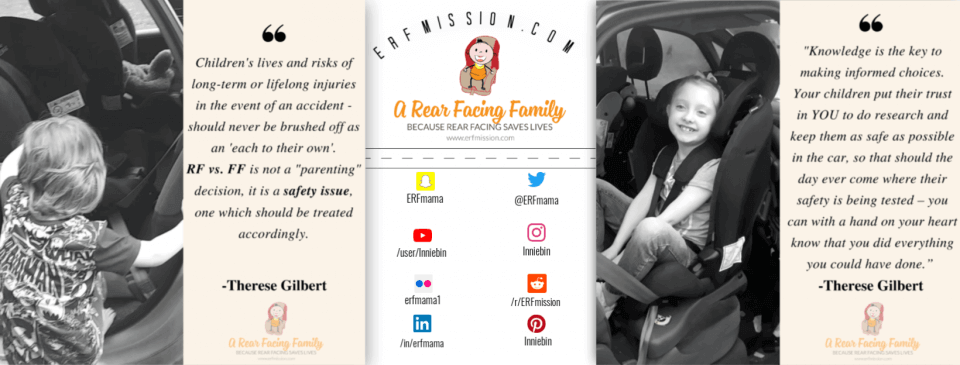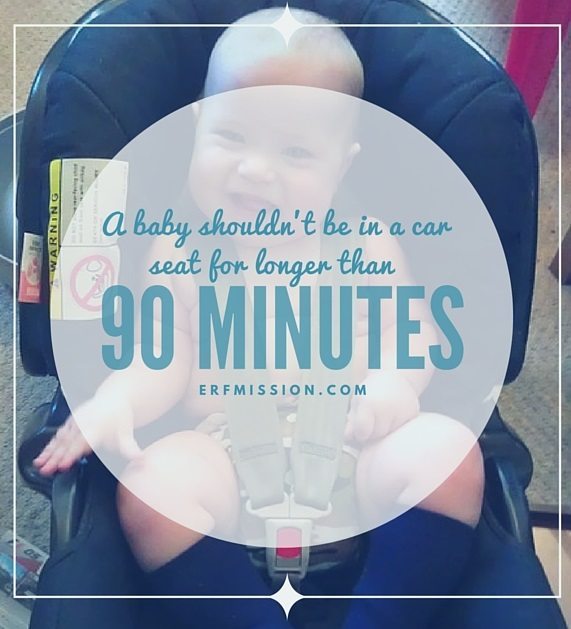There’s been a lot of media coverage recently on the baby who died while sleeping in a car seat.
Unfortunately this is not new news and sadly this tragedy happens or almost happens far too often.
Some people might be under the impression that it’s all just media. It’s all just scaremongering, so I wanted to invite you all to read a study (or two) that was made on the subject.
It is not only in the car seats babies die, but also bouncers, swings, strollers and even slings.
This is why it’s so so important that you (and me and everyone) follow the guidelines that are set in place to prevent these things. They are there for a reason.
Update December 2nd 2016:
The Baby Products Association would like to respond to Professor Peter Flemming’s research being reported in the media today:
“Whilst the Baby Products Association (the UK’s trade association involved in the regulation and standardisation of baby products) welcomes Professor Peter Flemming’s research announced today regarding the use of car seats and very young babies, it believes that the results are inconclusive. There were a low number of clinical trials conducted and there is no determination as to whether the incline and/or the vibration of the car seat used for the study impacted the results as no 30 degree with vibration control test was conducted.
It is a generally accepted rule that young babies are safest in a ‘lie flat’ position. However, car seats are designed to minimise the head from pulling on the critical neck area in the event of a collision and a complete lie flat position would not provide the safety required. This is why manufacturers design seats as they are today. However, it is accepted that young children should not be contained in a car seat for more than two hours at a time.”
“The largest issue recognised for the ‘over use’ of car seats is when they are not used purely as a safety product in the car, but when used combined with a stroller to form what is often called a ‘travel system’. Whilst a travel system provides the convenience to transfer a baby from car to stroller and return without disturbance, in light of this study and other studies surrounding the safest position for a baby to be positioned for prolonged periods of time we felt that it would be prudent to introduce a new guidance that the system should not be used for periods of longer than 30 minutes for babies under four weeks of age and two hours for those older than four weeks.“
The Baby Products Association advises that:
* Try not to use a car seat in the first four weeks of a baby’s life for periods of more than 30 minutes either inside the car or a combined period of time as part of a travel system.* If it is essential for young babies less than 4 weeks old to be in a car seat within a vehicle for longer periods, it is recommended that an adult sits in the rear of the vehicle with the child to regularly check its comfort. On long journeys, take regular breaks, at least every 30 minutes, removing the baby from its seat for a short period of time before continuing the journey.
* Do not use a car seat after the age of four weeks for longer than two hours inside or outside the car or for combined periods.
Web: www.b-p-a.org
A baby shouldn’t be in a car seat for longer than 2h continuously
Take breaks, don’t leave the baby in the car seat on the travel system for hours on end while out in town doing x-mas shopping. Give them some breaks. If you sit down a good thing to do is to take the baby out of their seat. But best of all and perhaps the safest is that you don’t use the car seat out of the car at all.
A study of sudden unexpected infant deaths associated with car seats showed the majority (10 cases; 70 %) occurred while car seats were being inappropriately used, outside of the car, including as an alternative to a cot or high-chair. “Inappropriately” is the word here.
To quote the study:
These data support the recommendation that car seats be used only for transport and not as alternatives for cots or high-chairs. More research is required to investigate the effect of travel in car seats on infants with underlying conditions. There appears to be no increased risk of unexpected deaths of healthy infants transported appropriately in car seats.
Again the two-hour rule comes in! By following the two-hour rule we follow the safest practice!
Another study from the US found that between 2004-2008, 31 babies died in their car seats due to either strangulation or asphyxiation (lack of oxygen). These tragedies also happened more outside of the car than inside, showing again just how important it is to use the car seat for what it’s for…THE CAR. And this wasn’t happening to preemie babies or newborns – no this was actually more common in older babies! The median age was actually 9 months old!
Their conclusion?
Infants and children 2 years of age and younger should be properly restrained and not be left unsupervised in sitting and carrying devices.
Car seats should not be used as sleeping areas outside of the vehicle, and children should never be in a car seat with unbuckled or partially buckled straps. Infants in slings should have their faces visible and above the edge of the sling, should not have their faces covered by fabric, and their chins should not be compressed into their chests. (J Pediatr 2015;-)
So what do we do now? In The Dad Network’s newest article on car seat safety that I worked with him on, he talked about how he really really didn’t want you to buy a travel system. And I have to say I agree with him. Not that I don’t understand it. Because I do, I really really do! I understand so perfectly well why you want to buy them, why you feel you might need it, I have THREE kids my self where 2 of them are only 20 months apart, and my oldest was only 6 when my 2nd was born. I understand you.
But I still agree with him. And I agree with him because I fear that the industry is creating dangers by making them. The above studies clearly show that!
But can it be done safer?
It probably can, I mean we do have some seats out that can “lie flat” while on the travel system, but all I still see is a lot of potential misuse of it. People forget to use it. If it’s anything we are very good at, it’s finding short time solutions to problems and thinking that “it’ll be OK”..”won’t happen to us”…and so forth. If I got a £ for every time I heard the excuse “it’s only a short journey” I think I would be a billionaire now.
My point is that I personally think we should focus more on preventing misuse and spreading the information about safe use, and I don’t think giving parents or carers and so forth 27 options of use on a car seat (yes I am exaggerating but you get my point!) is helping that.
A lot of people have problems just fitting the seat right in the car, and we’re only talking two colours on the belt paths then. One for rear facing (blue) and one for forward facing (red). Not to mention that the recline of the infant car seats that have a “lie flat” option on the seat when on the travel system has this option selected by moving the roll cage bar (or “carry handle” as it’s more commonly known as).
What scares me then is; what if that bar isn’t put in the correct position when back in the car? I can tell you right now what’s going to happen if you crash then, the infant seat is going to look like this:
It’s a scary sight wouldn’t you say? Luckily the infant wasn’t in the car seat when the crash happened, and this was a “low-speed” frontal collision at only 20-30 mph. Had the baby been in the seat at the time…
Luckily the driver was OK and he only suffered minor injuries because the lorry saw the crash coming and stopped just before the impact.
So this was a real-life example of misuse I think can possibly happen even more if we are given far too many choices and options on the car seats and how to use them.
I am well aware that there can be special circumstances involved.
I was told of one while writing this; Hyperekplexia, but as that mum also told me – her child slept attached to an oxygen saturation monitor & there was also always oxygen in the house.
So again, a unique circumstance that was the best medical solution they had at the time, and their medical care agreed with that decision.
And to quote the mum “I do not condone it, my situation is incredibly unique and shouldn’t be taken to mean anyone can do it.“.
I hope you found the information I’ve given helpful, but most of all I hope you also do check out those studies.
Have a great weekend & don’t forget to leave a comment below, I would love to hear your thoughts on the subject!
There has been a car seat recall, please read here!
Therese has completed the ‘Advanced Child Car Seat Training Course’ at TRL (Transport Research Lab) and is a CPD accredited car seat expert. She blogs about in-car safety, car seats, tips, reviews, giveaways and advice. She’s a mum on a mission to change the law and raise awareness. She is also a breastfeeding advocate and gentle parenting promoter who loves cloth nappies, baby-wearing, BLW and co-sleeping/bed-sharing.





